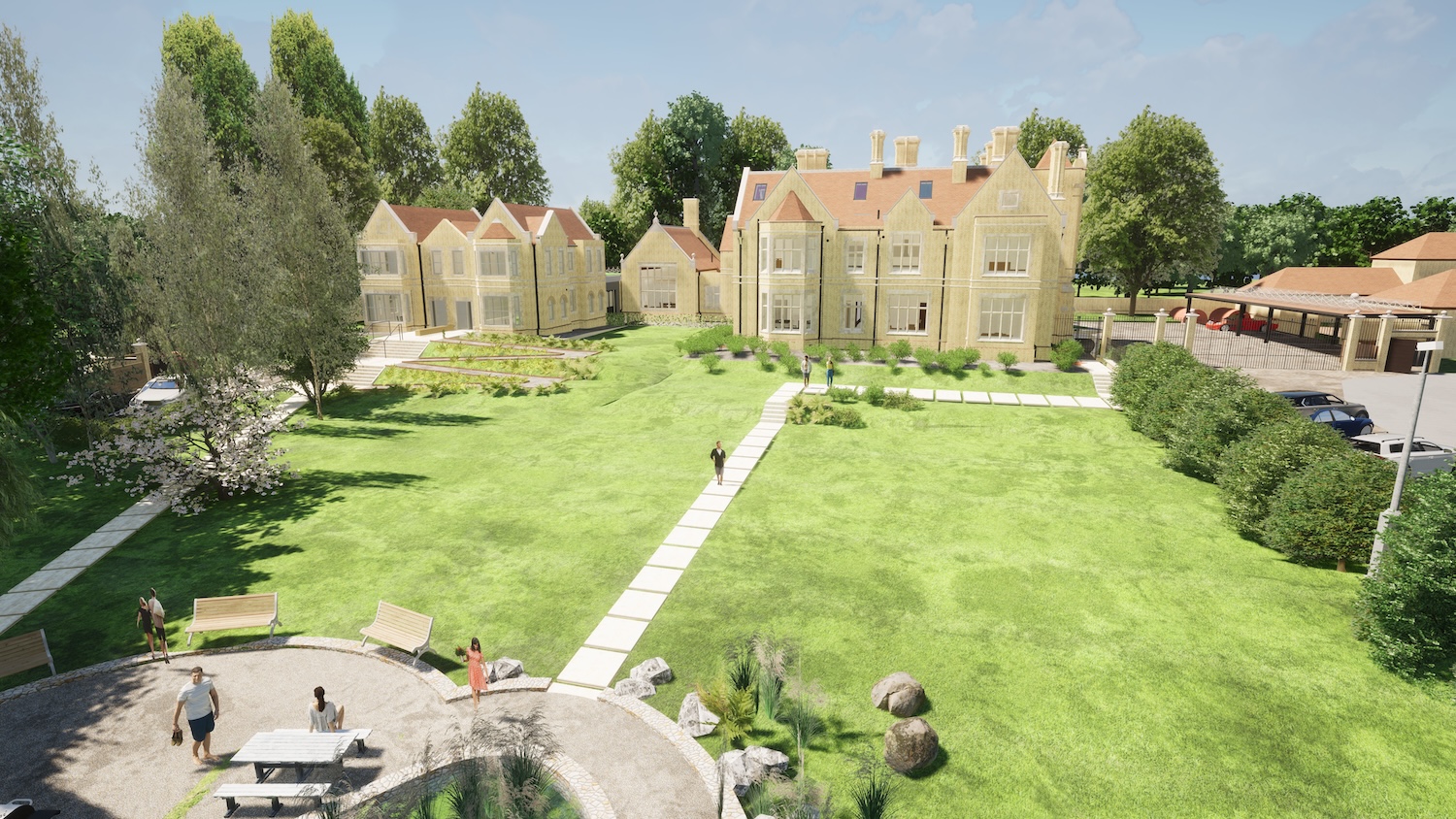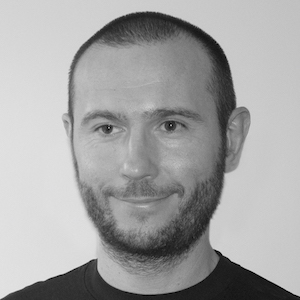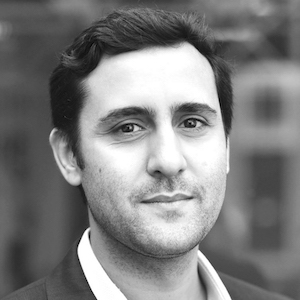
Airc.design and Airc.digital are working on the conversion of Park House, a 19th Century listed building in Egham, Surrey, using digital tools to transform the design, engage with stakeholders and collaborate with the supply chain.
Originally a manor house, the building has been used as commercial premises in recent years. Having bought the property with planning permission to create six apartments and two new townhouses, developer Yellow Brick Capital asked Airc.design and Airc.digital to review the initial proposals.
Recognising several challenges and missed opportunities, Airc presented new plans that would use the existing space better and preserve many more of the house’s original features including staircases, timber ceilings, chimneys and cornices as part of a heritage-led design. Moreover, the project would deliver nine units in total instead of eight.
Park House
Client: Yellow Brick Capital
Architect: Airc.design
BIM Consultant: Airc.digital
Landscape design: Airc.design (in collaboration with the landscape contractor)
Interior design: Airc.design
Surveyor: Murphy GS
Town Planning: Rob Clarke Planning
Structural Engineer: Engineeria
Principal Contractor: Harlequin Brickwork
MEP Contractor: Walter Mower
The power of point cloud
To make the best of the existing building, Airc.digital started modelling based on a point-cloud survey, commissioned by Yellow Brick to Murphy GS. This reduced the survey cost by at least half, and ensured the design team, the developer and the contractor had the details of the historic building at all stages of the design.
Jaime Ingram, BIM lead and co-founder of Airc.digital, explains: “We brought the E57 point-cloud scan into Archicad and used that as a reference to start modelling from. The point cloud contained a lot of information and gave us a very clear understanding of every detail of the building.”
Airc used Graphisoft’s GDL scripting language to create its own design tool called CloudTool, which allows the practice to easily manipulate point clouds in Archicad. This tool is a key part of the practice’s workflow that enables easy management of all aspects of a retrofit project.
Although some of the rooms weren’t accessible when the original point cloud survey was carried out, Airc.digital was able to take further point-cloud scans using an iPad during follow-up visits. These were then federated with the model in Archicad.
Pierre Saunal, architect and co-founder of Airc.design, continues: “That’s the beauty of using this technology; if there’s an area that can’t be surveyed initially, every time we go on site we can take follow-up point clouds and federate with the original one. We also did this for some of the detailed original features that weren’t captured in the initial survey.”
Original features and planning protection
Throughout the project, Airc.design and Airc.digital modelled to the level of detail necessary at the time. For example, for the planning application, the team could show the original and historical features that needed to be preserved for the listed building protection, all within the Archicad model.

“That’s the beauty of using this technology: if there’s an area that can’t be surveyed initially, every time we go on site we can take follow-up point clouds and federate with the original one.”
“The BIM model and BIMx were used extensively when talking to the council,” Saunal explains. “We were able to add more details to the model during this process, for example, to demonstrate how we would preserve the details around the windows.”
Ingram adds: “When modelling, we used the renovation filters within Archicad to show what would be removed and what would stay. We also used the optioneering layers to compare different design solutions.”
In addition to the seven apartments created in the original building, the project includes an extension to create two new townhouses. This extension incorporates many of the design features of the original manor house, but with a clear distinction between the two buildings. With the help of the point cloud scans, it was very quick to take these original features and bring them into the new building model, making the design workflows much more efficient.
“At the planning committee, the proposal was unanimously approved by the council. The planners agreed that the proposal ‘makes the best use of the building’. It’s simple – but that’s what you want to hear when you work on retrofit. You want the feeling that you have maximised the potential of the building,” says Saunal.
Close collaboration
Airc started working at an early stage with the contractor, Harlequin Brickwork, and effectively combined RIBA Stages 3 and 4 of the design. By bringing together the contractor, structural engineer, MEP and landscaping teams early, the Archicad model helped to communicate the design with all those involved in the project.
Saunal continues: “By working closely together, there is a real understanding of the value of the design process: the contractor and subcontractors led by Michael Leonard embraced and welcomed straight away the creation of the BIM model because it helped them to understand the design intentions and the construction elements.
“Moreover, the model helped us work collaboratively on the design. For example, when we were looking at the best way to preserve the original chimney structures, the contractor was able to input into the process.
“Another solution we found during these meetings was the addition of a dormer window to one of the roofs. This idea came directly from Michael looking at the 3D model.”
Airc used BIMx extensively to demonstrate and explore the designs with the client and contractors.
“BIMx has been transformative because it allows everyone to be able to really see the designs. The contractor hadn’t used it before, but was very impressed with BIMx,” Ingram says.

“When modelling, we used the renovation filters to show what would be removed and what would stay. We also used the optioneering layers to compare different design solutions.”
Circularity and biodiversity
Throughout the project, the team aims to reuse as much material as possible. Everything that is removed from the site will either be reused as part of the project, or elsewhere.
“This can prove difficult,” says Ingram. “For example, there are some fluorescent lights that are in a perfect state and could be used in another building. If we can’t reuse them, we will recycle – the ultimate aim is to avoid all waste.”
In addition, bats were living in the roof and needed to be relocated to the back of the existing building. This has to be done at specific times of the year to minimise disruption and must be completed before building work commences on the existing building.
With the help of the BIM model, Airc demonstrated to the council that the new space for the bats is appropriate.
A sustainable design
To improve the original building’s energy efficiency, extra insulation was necessary, but this couldn’t be applied to the external walls as the building is listed.
Internal insulation was therefore added, but this needed careful consideration to keep the building’s internal original features.
The approach Airc took was to model the existing features in Archicad, digitally remove them from the model, add the internal insulation and then add the features back in.
Ingram says: “Previously, this would have been very difficult and time-consuming. However, with the Archicad model, coordination is much easier. For example, we can take out existing cornices, insulate underneath, and put them back. The ability to accurately model this process comes directly from using the point cloud from the start.”
The project includes several sustainability improvements, including roof and wall insulation, rainwater management and permeable surfaces, air-source heat pumps, EV charging points and protected trees within the landscape.
Further planning applications are underway to increase the sustainability and desirability of the site with an exclusive entrance and discreet solar panels.
Overall, the new designs will add value and increase sustainability while respecting the history of the existing building. Work on site started in March 2024 with an expected completion date of September 2025.
Don’t miss out on BIM and digital construction news: sign up to receive the BIMplus newsletter.













